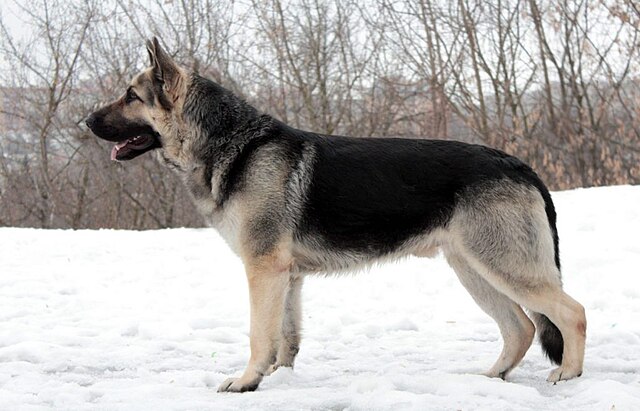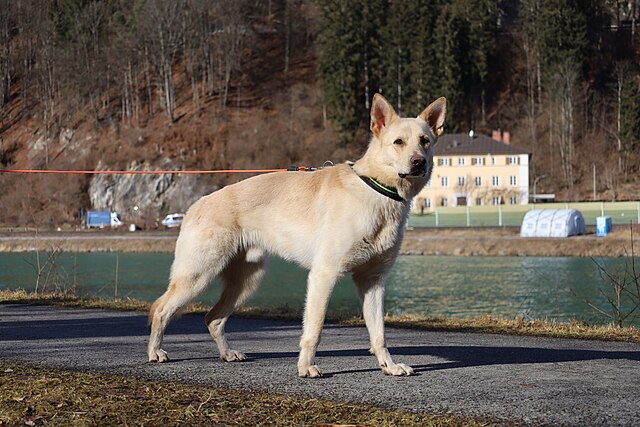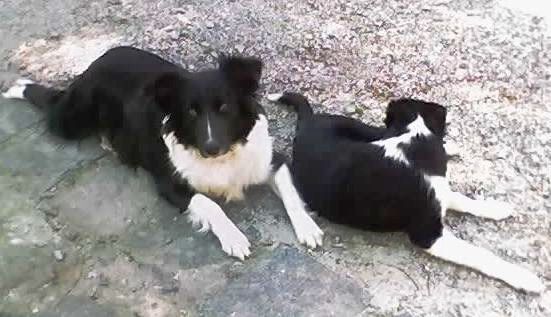The Pyrenean Shepherd is a small to medium-sized herding breed which was developed in the mountains of France. He is devoted and loyal to his owner and lives to please. This breed needs a job to stay busy and out of trouble, and to fulfill his inborn requirement to work. He does best living with an owner who will take him out frequently and get him involved in activities. This is not a breed for people who are away all day (separation anxiety is a problem in the breed). The Pyr Shep needs lots of socialization, training and an owner who is dog-savvy. Not because he is inherently difficult to live with – in fact, he is easy to live with… for those who know what they are doing.
There is a lot of variation in the appearance of this breed. First, Pyrenean Shepherds come in two coat varieties: the rough-faced and the smooth-faced. Furthermore, rough-faced dogs can have one of two different coat lengths: long or demi-long. The long coat has a tendency to form cords (like dreadlocks) and owners can choose to either let this happen naturally or to keep the dog brushed out and free of cords (it’s worth noting that long-coated dogs are quite a bit more work and require much more grooming than the other coat types.) This gives us 4 coat variations within the breed, and accounts for a lot of the differences in appearance from one Pyr Shep to the next. When you also factor in 3 ear types (cropped, semi-erect and rose), 3 tail types (docked, natural bob and long), a large variation of allowed sizes (15-21 inches) and over 10 possible colors, it becomes easy to see how variable the appearance there can be!
Pyr Sheps have an abundance of energy that need to be channeled into appropriate arenas, such as herding or agility. Regular daily exercise is a must – they really require a yard to run around in, as well as daily walks or jogs. While you may be able to get away with a walk every couple of days (assuming the dog has lots of yard-running time daily), they would do best with an hour’s outing every single day. These really aren’t apartment dogs because regular off-leash romps are very important. It can be done… but probably shouldn’t. It cannot be stressed enough how much the Pyr Shep loves and adores his owner, and just how much he needs to feel like he is an important part of “the pack” (the family). How to make him feel included? Running/training/exercising with his owner every day!
The breed gets along well with other dogs for the most part, although some can be pushy and dominant. There normally isn’t a problem with cats and other small (or large) animals. Most Pyr Sheps get along well with children, especially those who will play with them! They will form bonds with every single member of the family and spend time with everyone as best as they are able. While they are incredibly social and friendly with their own family, they might be a bit wary when meeting new people. They need time to warm up, and it is best if the dog comes to the person rather than the other way around. This is also why early socialization is a must.
The Pyrenean Shepherd is extremely intelligent. Developed to work with his owner as well as make decisions on his own, this breed can usually figure out about anything! He is easily trained and highly willing to please. The breed loves learning new things and especially loves a challenge. Also, because they are so agile, nimble and quick they are naturals at learning agility. Their jumping abilities alone are definitely worth mentioning. As such, they make great dogs for those who are looking to compete in dog sports! These dogs are a “hidden jewel” when it comes to versatility, and they excel in all manner of competitive dog activities.
Pyr Sheps make good watchdogs and will alert to any sounds they hear outside (or inside). The breed is known for barking a lot, especially if they are allowed to get away with it all of the time. Training them the “quiet” command is fairly essential. Even with the quiet command, it is not reasonable to expect this breed to be silent. Instead, “quiet” means to stop barking once the dog has already started.
This is a long-lived breed. It is not unusual for a Pyrenean Shepherd to live into his late teens. That said, all dogs (purebred and mixes) have health defects in their backgrounds, and the Pyr Shep is no exception. Getting a purebred dog means that you have an idea of which health problems to expect, should something crop up. The known issues in this breed include hip dysplasia, heart defects, patellar subluxation, and eye problems – however overall, most members of the breed are very healthy.




